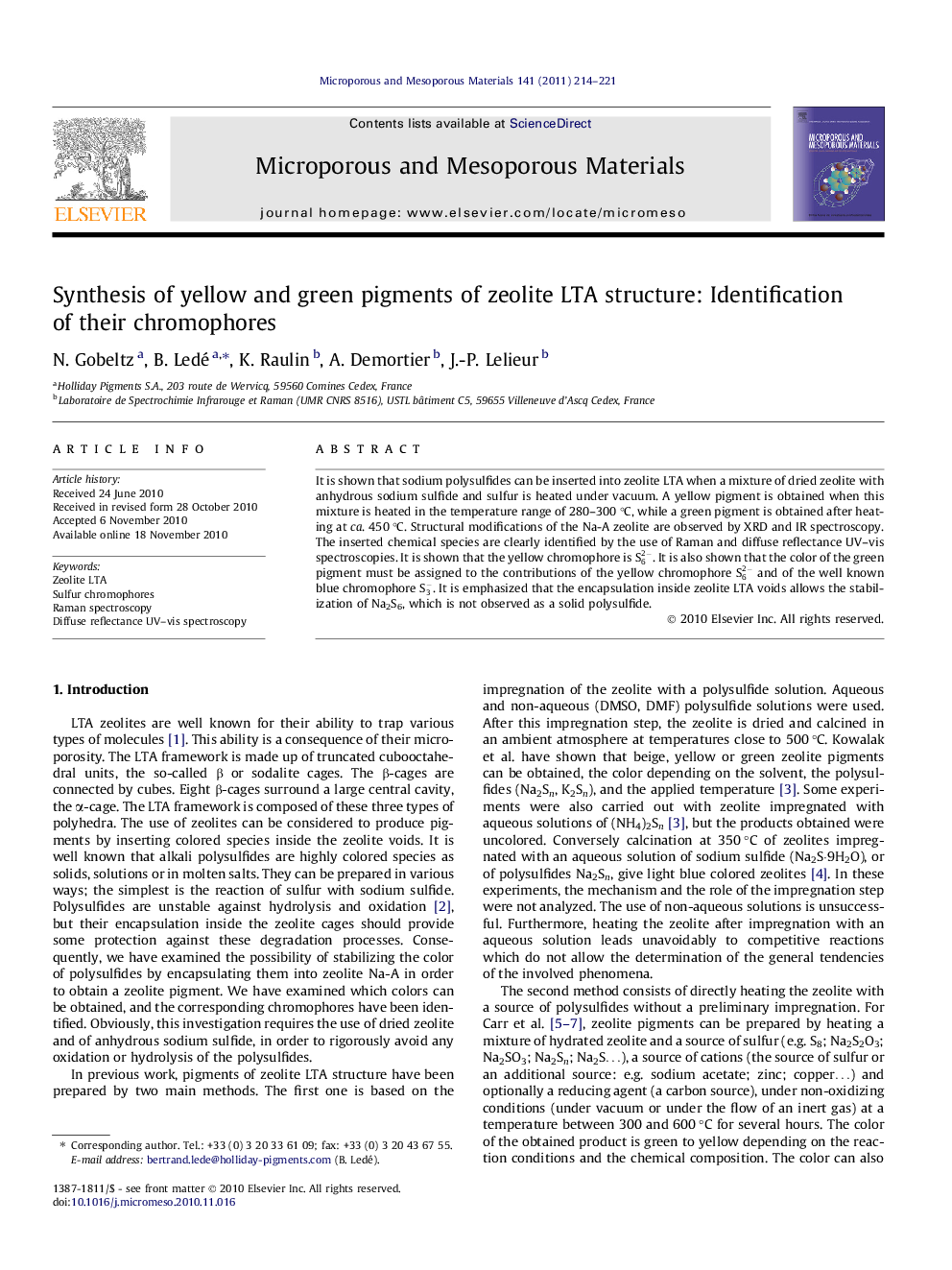| Article ID | Journal | Published Year | Pages | File Type |
|---|---|---|---|---|
| 75443 | Microporous and Mesoporous Materials | 2011 | 8 Pages |
It is shown that sodium polysulfides can be inserted into zeolite LTA when a mixture of dried zeolite with anhydrous sodium sulfide and sulfur is heated under vacuum. A yellow pigment is obtained when this mixture is heated in the temperature range of 280–300 °C, while a green pigment is obtained after heating at ca. 450 °C. Structural modifications of the Na-A zeolite are observed by XRD and IR spectroscopy. The inserted chemical species are clearly identified by the use of Raman and diffuse reflectance UV–vis spectroscopies. It is shown that the yellow chromophore is S62-. It is also shown that the color of the green pigment must be assigned to the contributions of the yellow chromophore S62- and of the well known blue chromophore S3-. It is emphasized that the encapsulation inside zeolite LTA voids allows the stabilization of Na2S6, which is not observed as a solid polysulfide.
Graphical abstractFigure optionsDownload full-size imageDownload as PowerPoint slideResearch highlights► Yellow and green zeolite A pigments can be obtained by heating dried zeolite Na-A, anhydrous sodium sulfide and sulfur in experimental conditions free from air and moisture. ► The yellow chromophore is S62- and is expected to be trapped in the large α-cages. ► The blue chromophore is S3- and is expected to be trapped in the small β-cages.
